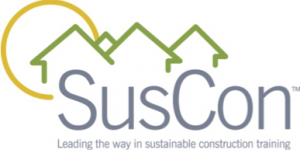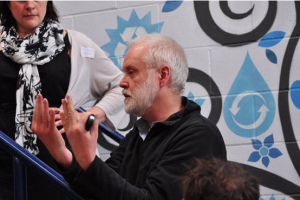
Retrofitting SusCon 3 Domestic CPD
GBE > Encyclopaedia > Files > CPD > Topics > Refurbishment > G#356 N#357
Retrofitting SusCon 3 Domestic CPD
About:
GBE CPD Metadata
- File Name: Retrofitting SusCon 3 Domestic CPD S48 PDF show
- File Type: PDF of PPT
- File Size: PDF Show: 353 kb
- Number of Slides/Pages: PDF Show: 48 Slides
- Course: Retrofitting Practical Toolkit for Architects CPD 2010 Programme Sustainable Construction
- Course Authors: Brian Murphy of GBE and Cath Hassell of ech2o…
- Created for: Retrofitting Course SusCon RIBA S/SE Architects CPD
- Sponsored by SEEDA, ESF, BSSP;
- Presented to: Retrofitting Course SusCon RIBA S/SE Architects CPD
- Author: BrianSpecMan aka Brian Murphy ONC HNC Construction BSc Dip Architecture (Hons+Dist)
- © GBE GBL GBC NGS ASWS 2010 – 2014
- Created: 18/05/2010
- Revision: 5
- Updated: __/__/2014
- Previously published on Scribd: 20/05/2010
- Scribd reads: 511 @06/01/2013
- Tags: CPD Course, Retrofitting,
- ProductSets: Methods of Construction, Materials, Building Elements,
- UserGroups: Students, Architects, Assistants, Technicians, Structural Engineers, Constructors
- Scope: Retrofitting Domestic Property
- Course: Retrofitting Practical Toolkit for Architects CPD 2010 Programme Sustainable Construction
GBE CPD Content
(without images; See the slide show for the pictures)
Retrofitting Practical Toolkit for Architects
- 2010 Programme Sustainable Construction
- Twitter: https://twitter.com/brianspecman
- E BrianSpecMan@icloud.com
- Facebook: https://www.facebook.com/BrianSpecMan
- Brian Murphy ONC HNC Construction, BSc Dip Architecture (Hons+Dist)
- Technician & Architect by Training
- Specification Writer by Choice
- Environmentalist by Action
- Greening up my act since 1999
GBE SusCon Course
3 Retrofitting Domestic Properties
- Winchester: 19th May 2010 & Guildford: 20th May 2010
- Brian Murphy of NGS
- Cath Hassell of EcH2O
Retrofitting: Domestic Properties
- Design issues: Building Performance:
- ‘Sarah Beeny effect’
- Domestic use patterns and design response
- Conservatories v Solar spaces
- Glazing issues
- Materials and methods,
- Insulation: Internal or external
- Party walls & Party floors, Internal walls
- Airtightness
- Heating
- Case Study
- Flood Risk
Domestic use patterns: impact on fabric & services
- Demands: morning and evening
- Aged population: 24 hours heating
- Winter: cheap Spanish holidays
- Fuel poverty: 0 hours
- Insulation, Insulation, Insulation
- Smoothing out the peaks and troughs
- Morning sun
- Collect heat in day for use in evening
- Expose thermal mass
- Avoid drafts
Design issues:
- 80% reduction in carbon consumption
- Passive solar design:
- Capture heat in winter
- Ventilate in summer
- Exploit thermal mass
- Passive solar roofs with Renewables
‘Sarah Beeny effect’
- TV presenter:
- Series: doing houses up for profit
- Setting up business to do more in future
- Never go beyond the basics
- Or profit margins eroded
- We have to get beyond her then philosophy:
- Profit before Planet
- Moving on from Sustainable enterprise
- to Sustainable outputs
- Now does ‘love match-making’ website
- But wrote a ‘Beeny Greenie’ guide
Achieving 80% is easy!
- Usable Buildings Trust Bill Bordass
- See Slide
GBE Link
Whole House Plan
- 80% reduction target at end
- If it can’t be done in one hit:
- Phased/zoned approach
- Phases:
- Insulation first, EcoBling last
- Supports & Pipes in first phase for EcoBling in later phase
- Zoned: room by room
- Spare room for decanting: room by room
- Early services:
- But insulated linings, before kit, complete linings later
Space for insulation?
- Victorian
- Generous rooms sizes,
- small rear extensions for bathroom & kitchens
- Peabody estate
- Generous flat and room sizes
- Parker Morris (PM) standards
- Rooms fit required furniture with no slack
- Stores took all the slack
- Post Parker Morris
- Too small for most things
- LTH, CfSH, DDA, PM+10%
- Generous + dictated layouts, difficult
Space for insulation?
- LTH, CfSH, DDA:
- Bathrooms & Kitchens:
- difficult if not impossible to lose space for insulation
- Staircases not easy to move away from external walls
- Difficult & very disruptive to add internal insulation
- External insulation may be dictated
Whole house replanning
- If there is an opportunity to re-plan the use of the rooms of the house take it
- Consider orientation
- Consider which rooms what to be on the east, south and west
- Bedrooms east not west
- Living rooms south to south west
- Simplify bathroom and kitchen plumbing
- Reduce hot water supply distances
- Make room for insulation
Whole house insulation
- Insulation continuity: No compromises
- Thermal bridging
- Heat will find a way out of there is one
- Add thermal breaks
- Remove thermal brides
- Wrap up thermal bridges
- Thermal bypass
- Cavities are places for heat to escape to
- Insulate all cavities
- Insulate all ducts/housings/boxing in
Whole house weather tightness
- Draft lobbies on all external doors
- Front, rear and side
- Internal or external?
- External if possible
- Internal may create a cold bridge
- Combine lobby with solar space?
- Add solar gain absorbing walls and floors
- Add thermal mass to those walls
- Glazing to trap the heat in winter
- Ventilation top and bottom to vent in summer
Conservatories v Solar spaces
- Conservatories
- Add to living space and get used all year
- Often create a redundant space behind
- Add to heating demands in winter
- Most (80%) in UK are heated
- Squandering energy
- Often open to house
- despite the building regulations
- Big energy drain
- Most (80%) in UK are heated
- No ventilation
- Must be top and bottom
- Add to overheating in summer
- Many are offering opaque roofs now
Conservatories v Solar spaces
- Solar spaces
- Are solar traps
- Insulating glass to trap heat in winter
- Once warm then let heat into house
- Surrounded by thermal mass
- Absorb heat and store until evening
- Windows in sloping and vertical faces
- Cooling ventilation in summer
- Can serve upper and lower floors
- Used as weather sheltered outdoor space in winter
- Are solar traps
Window & Doors
- New windows & doors to align with insulation
- New insulation to wrap to windows & doors
- External Insulation required windows set at outer face or reveals insulated as well as walls
- Internal Insulation required windows set at inner face or reveals insulated as well as walls
- A good window placed badly can perform as badly as a poor windows placed well
Glazing issues
- Thermal comfort
- Aim for 17 degrees inside face of glass
- Close (3 degrees) to room temperature
- No discernible coolth down draft
- Warm feet:
- warm and happy people
- Passivhaus accredited windows will achieve this
Upgrading windows
- Secondary glazing
- Improved U value
- Improved thermal comfort
- Improved airtightness
- Improved acoustics
- Improved security
- Improved utility
- Allow original window to perform as intended
- Air leaky
Refurbish windows
- Replacement glazing
- Improved U value
- Modify beading
- Improve airtightness of sashes and casements
- Refurbish ironmongery
- Refurbish counter weights
- Redecorate: Whilst out of opening, all round
- Remove years of paint jamming sashes
Services & Void Insulation
- As heating demands tumble
- Hot water heat losses become very important
- Cold water being warmed becomes important
- Lagging of pipes seems to be difficult for plumbers
- Labour intensive cost cutting opportunity
- So fully insulate the voids they run in
- not the pipes
- Every opening up must be insulated before closing
Multi trades
- Insulation
- Renderers must learn insulated render
- Plumbers must learn insulating pipes or voids
- Electricians must learn insulating cable or voids
- Air tightness
- Kitchen fitters must learn air tightness
- Bathroom fitters must lean air tightness
Wall Insulation:
- Cavity walls: “easy to insulate”
- insulation is easy but wholly inadequate
- Solid walls: “difficult to insulate”
- Internal and/or external insulation
- Internal insulation and dry-lining
- External insulation and render or cladding
- Not difficult, just less easy
Materials, k values and thicknesses
- See Slide
Insulation Thickness
- Different k values
- Reducing thickness
- High cost of thin insulation
- Reasons for choosing worse k value materials
- Carbon Sequestration: plant based
- Decrement Delay: dense materials
- Moisture management: plant & wool based
- Wind and Air Tightness: dense materials
- T&G jointed
- Acoustic performance: dense materials
Building Performance Current/Recent Construction
Recent Building Principles pre 1919
- See Slide
Recent construction
- Basic cavity wall
- Absorbent brick
- Cement mortar joints
- Thin outer leaf, cavity, inner leaf
- Ties between leaves with drips
- Wind driven rainfall hits wall
- some runs down surface
- No shedding details except sills
Recent construction
- Some absorbed
- –Some drawn through runs down inner face of external leaf
- –Some evaporates inwards
- –Cavity ventilated and drained
- Damp proof course in wall leaves and membrane in floor, linked
- Ground water not drawn upwards
- Wall absorbs internal moisture,
- –Drawn through and evaporates into cavity
- –Heat consumed to dry building
Current Building Principles
Current Construction with Insulated cavity
- Partial Fill
- Permeable insulation needs breather membrane in cavity
- To maintain insulation performance
- Closed cell or foil faced traps moisture
- Full fill
- Outer face is moist
- Must be hydrophobic
- And not offer moisture transport
Current Building Principles
- See Slide
Recent Building Principles
Recent Constructions
- Timber framed cassette panels
- Vapour barriers inadequately sealed at services and abutments
- Moisture enters the panels
- Rock or glass wool insulation
- Hydrophobic insulation
- Moisture goes to timber until it escapes
- Moisture goes to unfilled cavity
- Thermal bypass:
- heat into cavities,
- air movement heat loss
- ventilation heat loss
Now Constructions if you want a Future
- Breathing walls
- Airtightness layers
- not vapour barriers
- Moisture permeable
- Wind tight outer layers,
- moisture permeable
- Resistance 5:1 Inner : Outer
- Hygroscopic insulation
- Absorbs moisture into fibres not into insulation trapped air space
- Absorbs moisture aways from timber
- Airtightness layers
Where to thermally insulate External wall?
- Cavity walls: in the cavity,
- but not enough needs much more
- Solid walls:
- Outside: optimum exposed thermal mass inside
- if architecture permits
- If T&CP permits
- If not too many services and signs attached
- Inside: hides thermal mass
- If plan layouts permit
- Kitchens and Bathrooms
- If staircase not at external wall
- If plan layouts permit
- Outside: optimum exposed thermal mass inside
Appearance
- Older properties may have architectural merit
- Terraces may be designed to be seen as a terrace
- Crumble details at eaves, corners and openings may discourage over cladding and external insulation
- Internal skirting, cornice, dado, wall linings may discourage internal insulation
Where to thermally insulate Roof?
- Lack thermal mass: risk overheating
- Add decrement delay to protect from summer radiant heat from sun
- Insulation between rafters: cold bridge through insulation
- Add insulation above the rafters
- Avoid insulation below the rafter
- Prevent cold bridging through insulation close to inside face
Where to thermally insulate Suspended Ground floor?
- Insulation between joists: cold bridge through insulation
- Add insulation below the joists
- Avoid insulation above the joist
- Prevent cold bridging through insulation close towards inside face
- Wind/air tightness important
Where to thermally insulate Ground Bearing floor?
- Insulation below floor:
- Disruptive for occupants
- Expensive and Wasteful
- New concrete floor: high carbon content
- Keep insulation dry: use DPM to wrap it up
- Exposes thermal mass
- But what follows?
- Does it cover it up?
- Expanded PS or Cellular Glass in bitumen
Where to thermally insulate Ground bearing floor?
- Insulation above floor:
- Potentially disruptive for occupants
- Relay carpets & other floor finishes?
- Thickness is an issue
- Thresholds or door modifications?
- Hides thermal mass
- Needs to insulate well to compensate
- VIP Vacuum Insulated Panels
- Modular: needs cut insulation at perimeter
- Aerogel quilt or bonded to board
Party Floors
- Hot air rises
- Air-paths bad for airtightness, acoustics, thermal and fire
- Thermal conduction all directions
- Thermal bridges are bad for heat transfer and acoustic transfer
- Thermal breaks are better
- Acoustic isolation and insulation
- Offers some thermal breaks and thermal insulation
Party walls
- Are not neutral
- Building Regulations: Assumes they are,
- Acoustics takes priority
- No U value required
- this is going to change
- Solid walls
- One person does not heat home
- Steals heat from neighbours
- One person does not heat home
- Large Surface Area
- Thermal mass potentially exploited if not insulated
Party walls
- Timber frame
- –Building Regulations Part L permits insulation in only one leaf
- –No insulation from 50% of flats or houses
- –Blown cellulose fibre into stud zone
- Cavity walls
- –Stack effect chimney to roof, thermal bridge at roof level
- –Heat could be collected and used
Internal Partitions
- Insulate them
- To stop excess heat from one side warming the other
- To stop ‘kept cold’ room(s) cooling adjacent ‘kept warm’ room(s)
- Fill hollow partitions (blown cellulose fibre)
- Fit internal door closers
- Manage heat flows
Airtightness
- Dry trade:
- –Plasterboard and skim can be airtight
- –But provides cavities for air to flow around in
- –Also air leaky at skirting and ceiling level
- Wet trade
- –Plaster has greater prospect for being airtight
- Wet and dry
- –Plaster parge coats are used before plasterboard
Plasters: Material choices
- Gypsum: lightweight, insulating, low thermal mass, low hygro-scopicity
- Cement: tough, high density, acoustic mass, thermal mass, impermeable, water and frost resistant, high carbon & energy
- Lime: moisture vapour permeable,
- Clay: natural, hygroscopic, high moisture mass, high density, high thermal mass, absorbs smells, absorbs moisture, absorbs radiation
Airtightness Approach
- Brown envelops wont achieve 80% reduction
- Testing comes too late
- Testing should occur before finishes
- Test the building fabric
- But airtightness awareness starts on day one
- Design it: Specify who fixes it
- Educate the trades
- Blower in user throughout the works that affect the external envelop and hollow constructions
- Every drill or cut: air in your face
- You made it, you fix it
Ventilation
- ‘Build tight ventilate right’
- Open windows in summer
- Uncontrolled ventilation: loses heat in winter
- Mechanical ventilation: constant low power during winter <100 watts
- Heat recovery: efficient is essential >85%
- Passivhaus accredited MVHR is suitable
- Whole house
- Whole house retrofit available too
- Supply via hall ceiling into rooms
- Return via hall, WC, bathroom and kitchen
Heating: Radiators
- Radiators
- Existing radiators: below windows
- External Insulation:
- Add reflective foil panels to wall
- Or heat up the thermal mass too much
- Internal Insulation:
- Radiators come off and pipes move
- Opportunity to move
- To internal partitions
- But if they are well very insulated external walls it may not make much difference
- External Insulation:
- Existing radiators: below windows
Heating: Under floor or in-wall
- Under floor heating
- –Disruptive to install
- –Opportunity to insulate the ground floor
- In wall piped heating
- –Insitu pipes and plaster
- –Boards with pipes and skim
- –Less disruptive to install
- –Internal wall partitions,
- –Non-domestic: screens, furniture
GBE CPD
GBE CPD Case Studies
- Refurbishment TSB Retrofit for a Future (CPD) N#329
GBE Projects
- TSB Retrofit for the Future Peterborough (Project) G#548 N#568
Flood Zones
- Contrary to Government Instruction:
- Don’t build in them
- Build above them if you have to
- Don’t build in them
- Contrary to EA advice:
- Don’t design in sacrificial materials
- You rely on your insurers
- You rely on the refurbishment sector
- The refurbishment sector is busy for 3 or more months doing the neighbours repairs
- You rely on waste sector & landfill capacity
- Don’t design in sacrificial materials
- Design to hose down and carry on as normal the day after the flood subsided
Flood risk:
- Determine potential flood level
- Site profiles to:
- redirect water?
- Defend against water?
- EA Permitting
- Raise above water levels
- Jacking existing buildings up
- Expensive
Flood risk: Site
- Existing site boundaries: masonry walls
- Add to make watertight
- Removable Covers for gates
- Bund earth banks: EA Issues
- Visual barrier
- Impact down stream
- Whole building barriers:
- Floatation or Fold up
Flood Risk: Building
- Accommodation to upper floors
- Construction:
- Avoid hollow systems: dry-lining, timber frame
- Use solid walls, bricks/blocks, render and skim
- Avoid timber construction: vulnerable to moisture
- Materials:
- Avoid permeable materials: Insulation
- Water and Frost resistance: important
- Ability to dry out: permeable assembly
- Avoid water soluble finishes: clay
Flood Risk: Services:
- High level electrics above flood level
- Flood valve to WC
- Removable Covers for Air bricks
- Removable Covers for external doors, gates and windows
© GBE GBC GBL NGS ASWS Brian Murphy aka BrianSpecMan **
9th June 2014 – 25th January 2021
Retrofitting SusCon 3 Domestic CPD
Images:
Organisations

SusCon Sustainable Construction
GBE CPD Course

GBE CPD Seminar

Retrofitting SusCon 3 PNG
Presenters and organisations

Brian Murphy aka BrianSpecMan BRM @ Build4 CAPEM Showroom

Cath Hassell Team, Water Champion, Carbon Champion,
GBE CPD Files
- Show PDF to view
- Retrofitting SusCon Series 1to6 PDF
- Show PPTX to present go to GBE Shop
© GBE GBC GBL NGS ASWS Brian Murphy aka BrianSpecMan **
6th June 2014 – 25th January 2021
Retrofitting SusCon 3 Domestic CPD
See Also:
GBE Past Events
- Retrofitting Internal Wall Insulation (Past Event) G#91
- Retrofit PAS 2035 (CPD) G#21613
- Retrofit Material Methods ZeroWise (CPD) N#729
GBE CPD
GBE Course
- SusCon Retrofitting Course:
- Retrofitting SusCon Course (CPD) G#354 N#355
- Retrofitting SusCon 1 From Global imperative to Retrofit objectives
- Why use an Architect? (CPD) G#353 N#354
- Retrofitting SusCon 2 Generic Issues Objectives (CPD) G#355 N#356
- Retrofitting SusCon 3 Domestic CPD G#356 N#357 (this page)
- Retrofitting SusCon 4 Historic (CPD) N#359
- Retrofitting SusCon 5 Larger Scale (CPD) N#360
- Retrofitting SusCon 6 Non-Domestic (CPD) N#361
- Retrofitting SusCon 61 Workshop (CPD) N#362
CPD Topics
- CDP Topic Refurbishment Retrofit (Navigation) G#1451 N#1419
- 47 Seminars listed there
Building Case Studies:
- CaseStudyAngleTownBoatemahWalk PDF Show
- CaseStudyBD+PListed1Barn PDF Show
- CaseStudyParityProjects PDF
Seminars:
- Material Exchange 4 Specification (CPD) G#308 N#309
- Reclaim Reuse Specification (CPD) G#316 N#317
- RefurbishmentTSBRetrofitForAFuture (CPD) PDF Show
- Retrofit GreenDeal (CPD) N#339
- Retrofit GreenDeal Risks Rev11 (CPD) N#351
- Retrofit Materials and Methods (CPD)
- TSB Retrofit for a Future Competition project
- Waste Refurbishment Hierarchy (CPD) N#418
- GBE Retrofit PAS 2035 (CPD) G#21613
- Retrofit Material Methods ZeroWise (CPD) N#729
- Retrofitting UK Targets Tactics Techniques (CPD) G#362 N#363
Seminars:
- See CPD Topic list above
GBE Brainstorm
- House NI 1960s EnerPHit Upgrade (Brainstorm) G#16288
- Stone Barn Conversion Thermal Insulation (BrainStorm) G#14897
GBE Briefing
- Retrofit for the Future (Brief) G#15149
GBE Q&A
- 1960 Timber Frame Retrofit (Q+A) Q#24728
- Suspended timber floor retrofit insulation (Q+A) G#3870
- Removing Cavity Wall Insulation (Q+A) G#38597
- Overlaying Loft Insulation (Q+A) G#38593
GBE Shop CPD
GBE In-House CPD
- CPD Your In-house CPD G#2404
GBE Lectures
- Refurbishment is not a hot topic in Architectural Education
GBE Lecture Courses
- GBE Lecture Courses G#480 N#486
- Subjects
- GBE Lectures Subjects G#715 N#737
- GBE Lectures G#480 N#486
- GBE Lectures Satisfied Customers
- UH Part 1 Year 2 Task Schedule (Course) G#17699
RIBA Part 2 Post-Graduate
RIBA Part 2 M Arch Lab 1 University of Hertfordshire 2019-2020
- 1 Sustainability Introduction
- Sustainability Introduction (Lecture) G#31739
GBE Issue Papers
- Overheating (Issue Papers) G#145
- Squashed Loft Insulation (Issue Papers) G#13919
- Urban Risks due to Climate Change (Issue Paper) G#12500
CPD Manufacturer’s
- GBE LitEdit LoftZoneCPD A02BRM100117 9H5 PDF handout
- GBE LitEdit LoftZoneCPD A02BRM100117 S39 PDF Show
- GBE LitEdit LoftZoneCPD A02BRM100117 PPTX Show with working hyperlinks
- GBE CPD BDS Building Defects and Solutions G#1667 N#1575
GBE Manufacturer
- Eco Answers Ltd t/a LoftZone G#13890
GBE System
- StoreFloor G#13287
© GBE GBC GBL NGS ASWS Brian Murphy aka BrianSpecMan **
13th November 2015 – 25th January 2021




